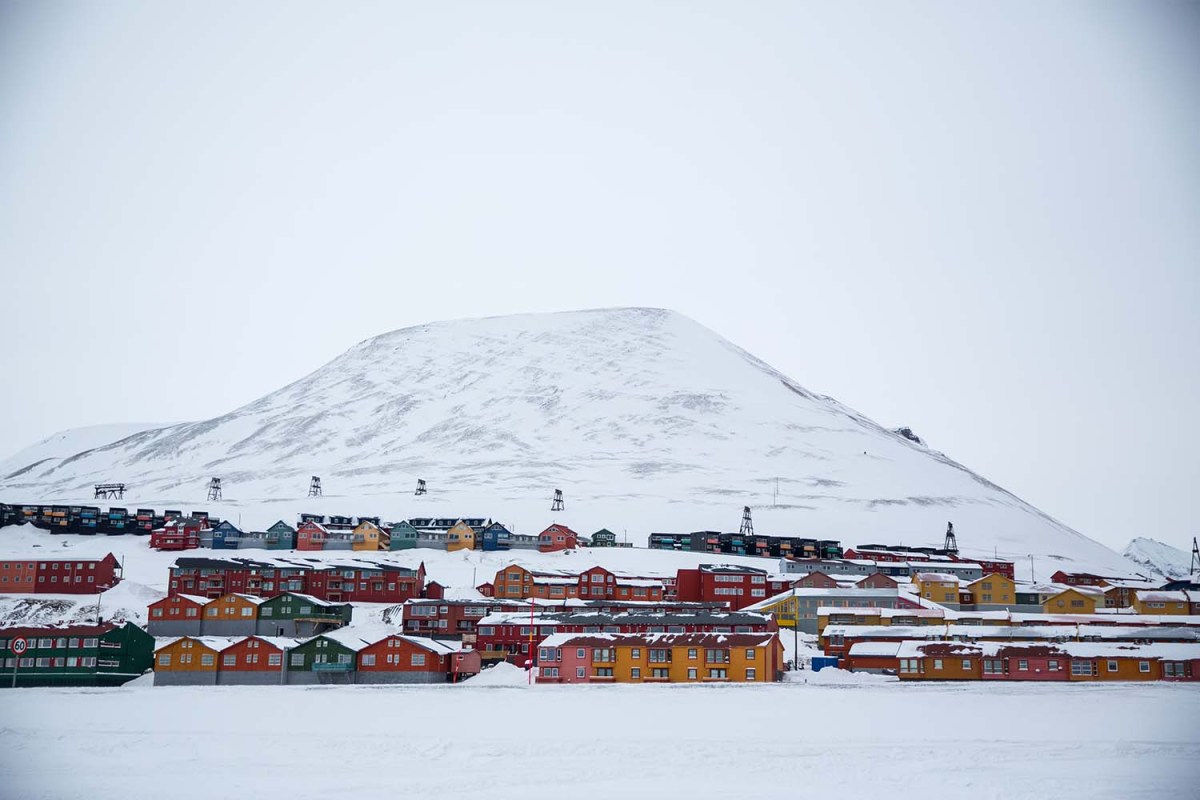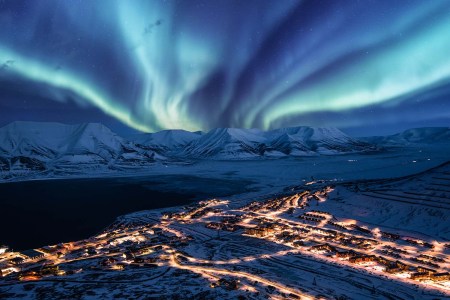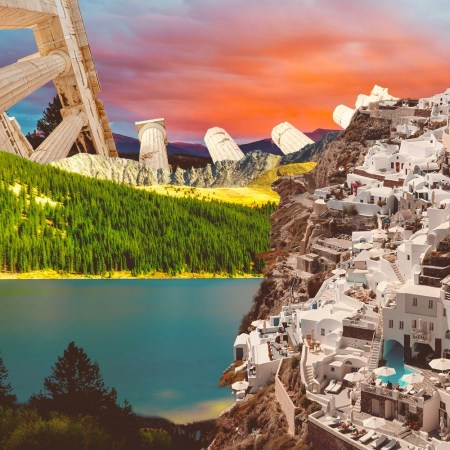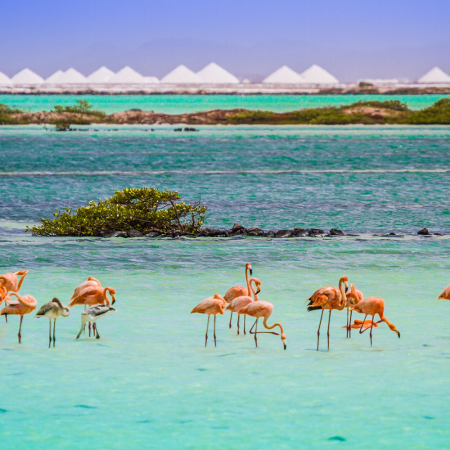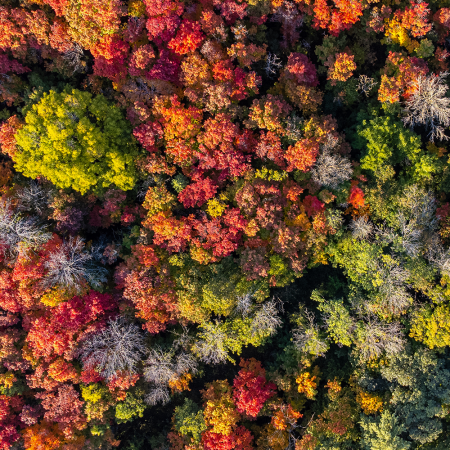The hottest destination on the planet is also one of its coldest. Svalbard, a remote archipelago found halfway between Tromsø (near the top of mainland Norway) and the North Pole, is home to the world’s northernmost permanent settlement. It’s so far north, you view the Northern Lights by looking south. It’s so far-flung that it houses the Global Seed Vault, humanity’s last ditch hope in the event of a global catastrophe wiping out crops and food supply. The distance moving south from Svalbard to Iceland is equivalent to the distance moving south from Iceland to Paris.
Yet Svalbard, deep in the Arctic Circle, may be one of the most essential destinations on the planet. And it’s not for the reason you expect.
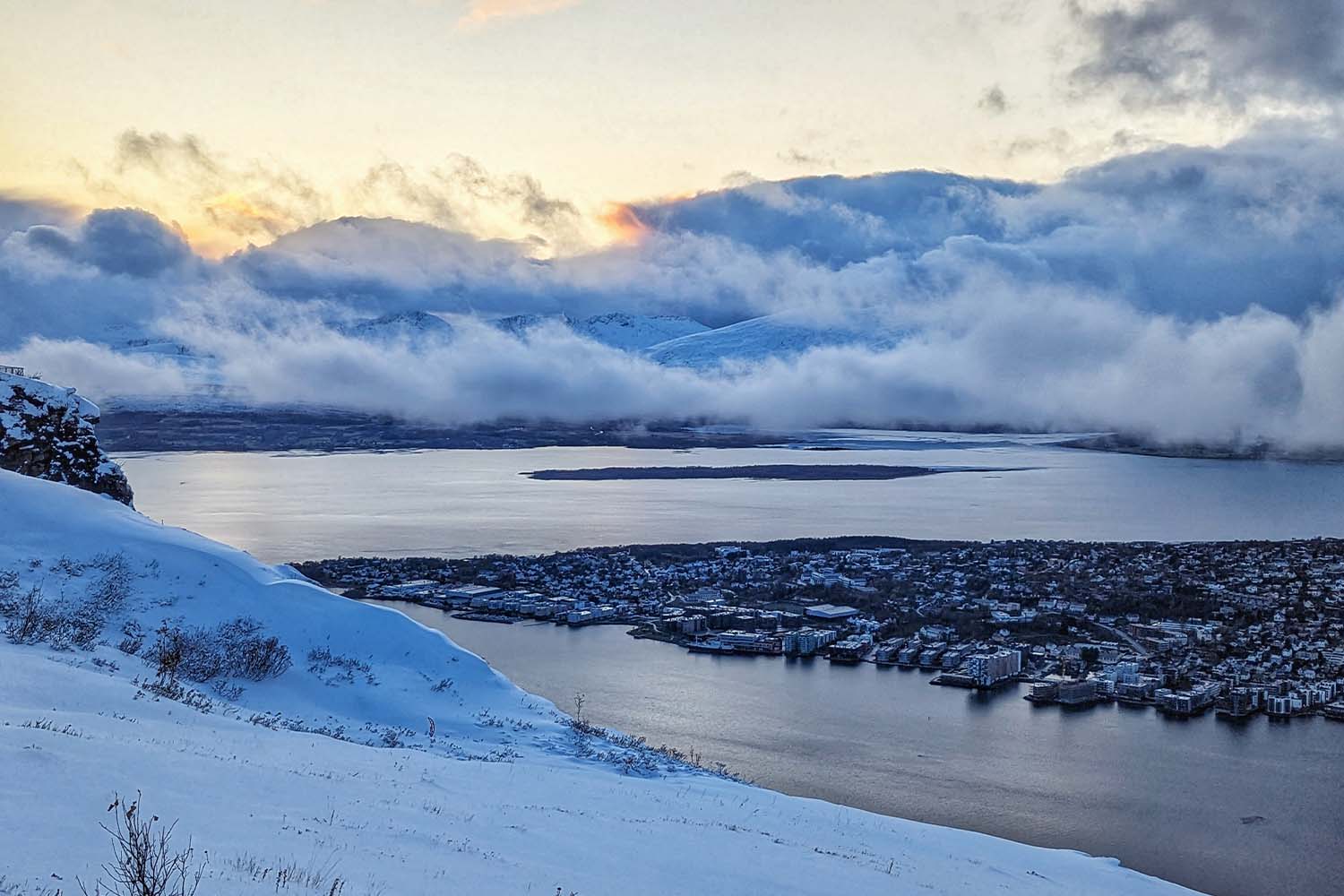
Why a Trip to Svalbard Is Essential
Yes, Svalbard is a stunning destination, and you’ll load up on major bragging points. But the real reason to go to this part of the world — the real reason we’re allowed to go, even — is to get a glimpse of something so special and breathtaking so to realize how necessary it is to safeguard. The region is renowned for its polar bears, with a population estimated at about 250 on the archipelago and 2,500 amid the surrounding Barents Sea. In the summer, the midnight sun beckons, and in the winter, the Northern Lights flutter and dance, alighting the sky. There are enormous glaciers to gawk at, arctic foxes and other seemingly magical creatures and features. Yet, all the way up at 78° North, there’s also a town, Longyearbyen, with a year-round population of 2,000 residents.
There is no indigenous populace on Svalbard, and the details remain obscured as to if, and when, the Vikings made it there. The explanation for why people settled there at all comes down to two of human civilization’s favored ways of mucking up the planet over the centuries: whaling and coal mining. Longyearbyen itself was a company town, established by John Munro Longyear and the Arctic Coal Company in 1906.
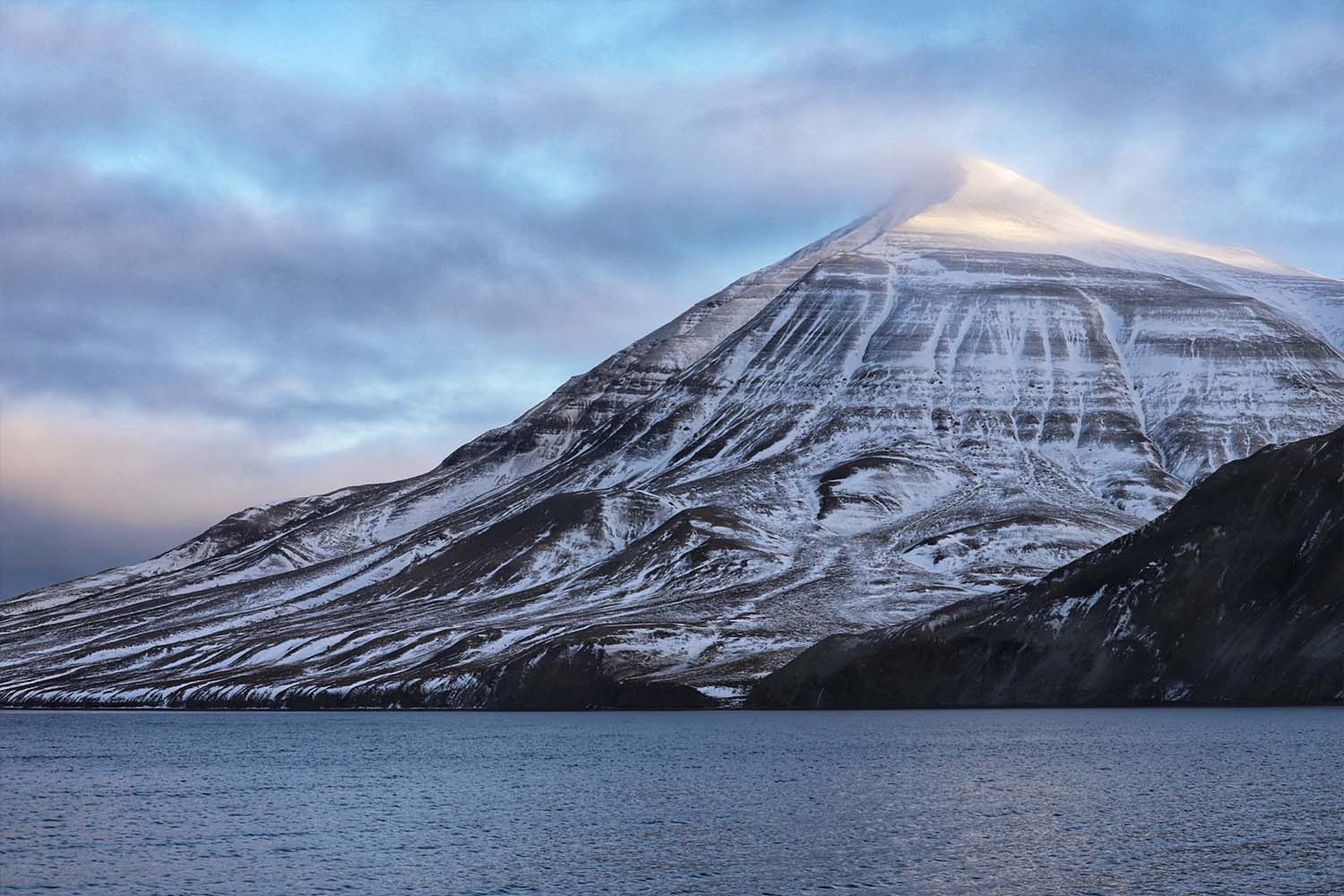
Our history interacting with Svalbard has always been one of exploitation. What, then, to make of tourism? “We shouldn’t be here,” says Sam Donck, a marine biologist serving as a guide on a Wildlife and Glacier Cruise aboard the MS Bard. “Svalbard should have a research station, like the ones they have on Antarctica, and that’s it.”
He’s speaking not only to the great efforts that humans need to make to survive in the environs and the impractical nature of maintaining a town with services such as a hospital and schools and amenities like hotels, cafes and pubs, but also to the importance of preservation, the need to leave behind a pristine environment rather than infringe upon it. “But it’s important to show the beauty, too, and tourism has a role to play,” Donck says. “Climate change is an educational issue, not a scientific one.”
Seeing the reality of climate change, from a locale considered to be among the world’s most vulnerable and bringing home that knowledge to share with others, is why traveling to Svalbard is an essential endeavor. “Unfortunately, this is the place that is changing the most because of climate change,” Donck says. “This is the front line.”
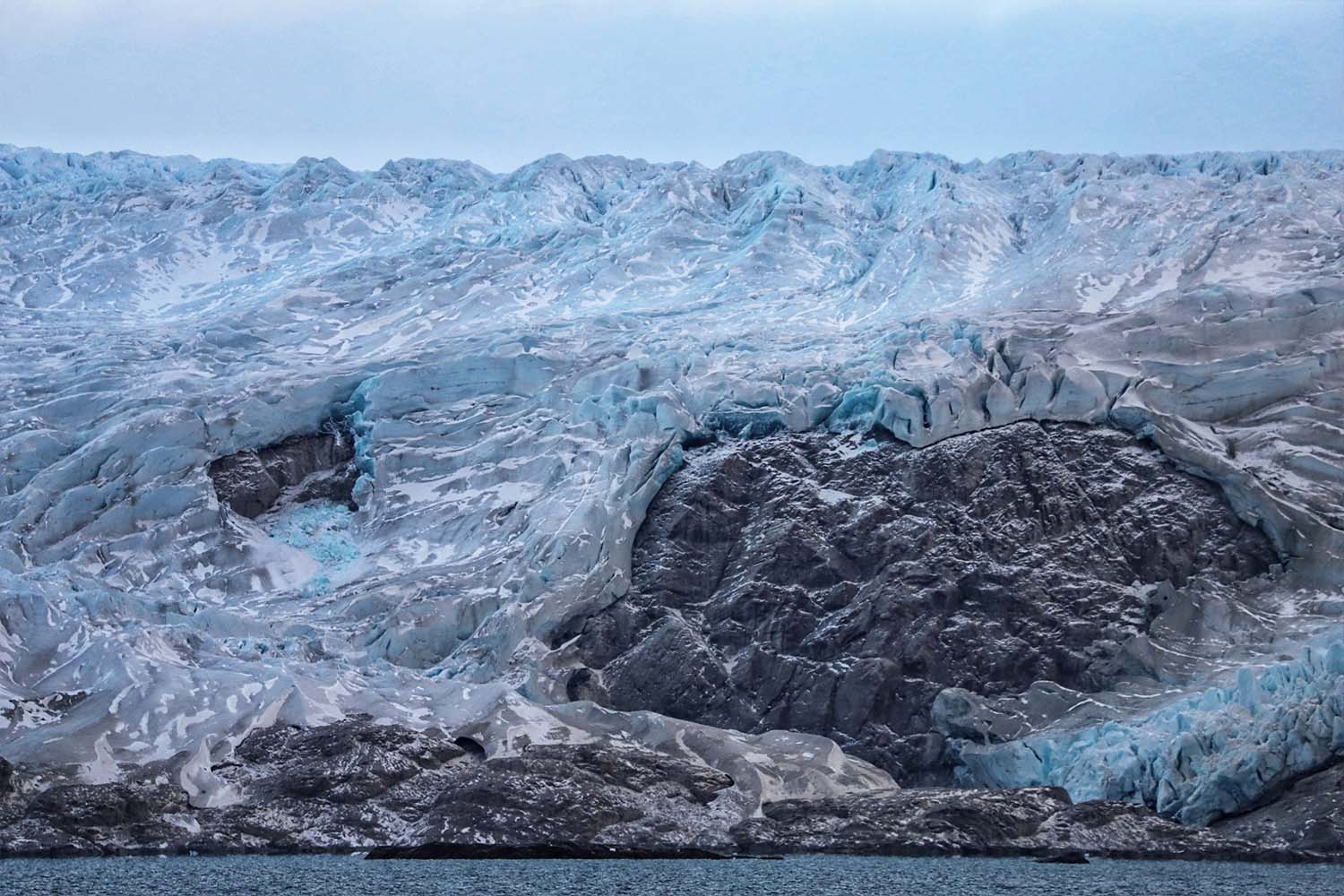
Donck says that in the past two decades, there’s been a 2.8° Celsius temperature change in Longyearbyen, and twice that, a staggering 5.6° Celsius temperature change at the northern reaches of the archipelago. This dwarfs the global average temperature increase of .86° Celsius compared to the pre-industrial period, a figure substantial enough to be wreaking havoc across the planet.
That change is having a heavy-handed impact in and around Svalbard already. “It was a very complicated summer for polar bears,” Donck says. Record summertime temperatures disrupted their habitat and their routine, as well as their ability to feed themselves and raise their young. Increased precipitation, in what should be a desert climate, kills vegetation; local fish species are forced to compete with arrivals from warmer waters; one polar bear died from avian flu after eating a bird. “We’re getting more pathogens here.”
Another guide aboard the same vessel, Frederic, was wrapping up his stint on Svalbard when I spoke with him in October. He was eager to move on because bearing witness to such severe human-caused changes to the natural world was a traumatic, emotionally draining experience. “The moment you have a deeper understanding of it, it’s hard, it’s sad, it’s tough,” he says. “Unless you’re emotionally detached from everything, it becomes a challenge.”
Those glaciers referenced above have receded in stark fashion, and the degradation is only picking up pace. “I’m glad we can tell people what’s going on, there’s a positive value to that, and I see the importance of education,” Frederic says. “But for me personally, it is difficult to see. It’s an absolute tragedy.”
Maybe the bucket list braggadocio is what pulls you in to make a visit to Svalbard. But seeing that impact for yourself, and gaining the type of firsthand education that can’t help but make you an advocate to support the region, is the true takeaway. That’s why you come. That’s what you bring home.
5 Remote Cold-Weather Islands You Need to Visit
Forget the swimsuit and flip-flops, you’ll need a parka and hiking boots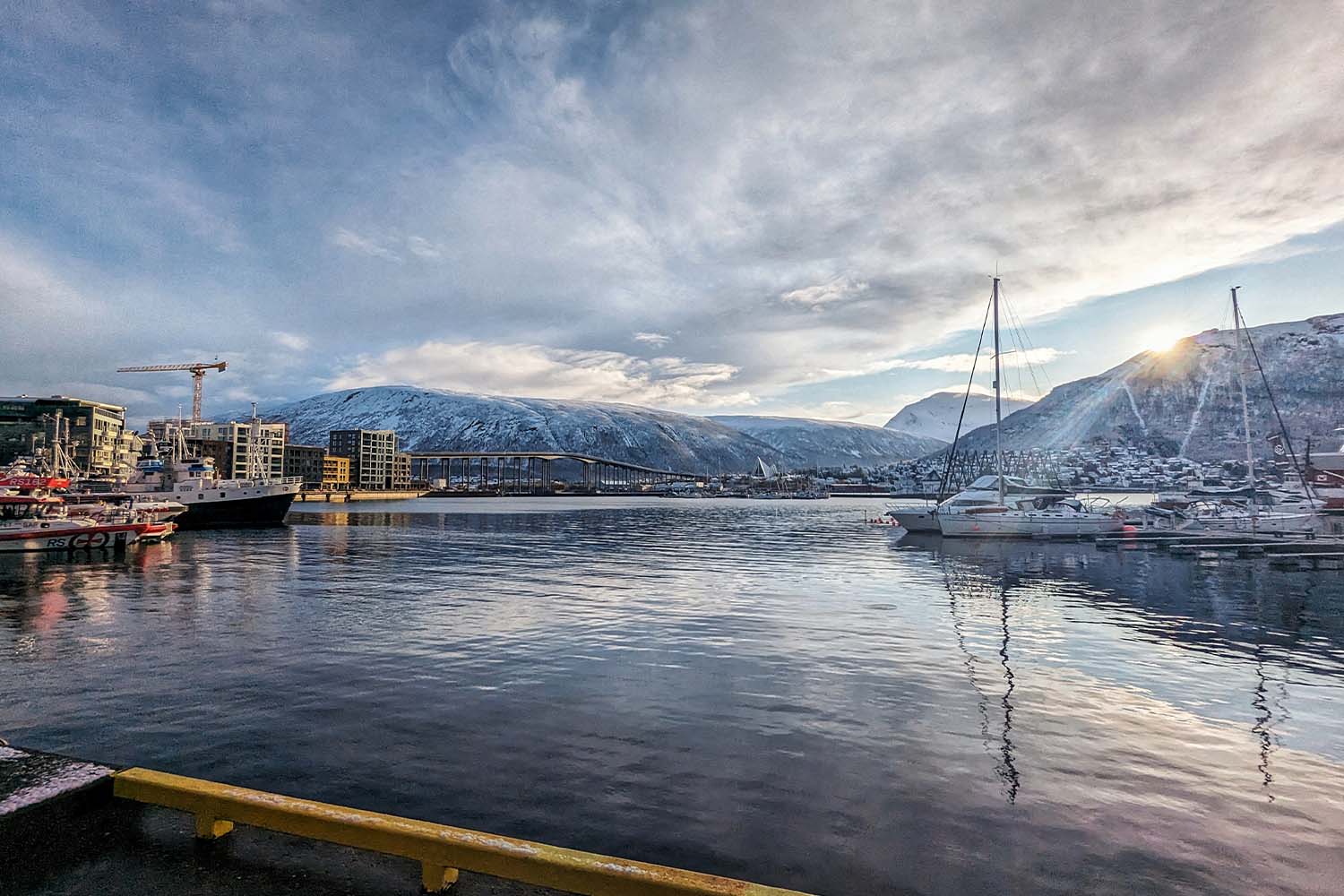
Reaching the Edge of the World
This may surprise you, but there is not a robust collection of direct flights to Svalbard. The nearest jumping off point is Tromsø, the Norwegian town located at a ho-hum 69° North, a mere 220 miles above the Arctic Circle. “You can have two types of weather in five minutes or from one side of the island to the other — that’s normal in the Arctic,” says Espen Minde, owner of Legendary Adventure, a bespoke tour company based in Tromsø. Excluding where you’re heading next, Tromsø is about as far north as you’re ever going to get, and it’s an intriguing destination in its own right.
Post up at the Moxy Tromso, a hotel that debuted this June. To give you an idea about where you are in the world, consider that this is the northernmost hotel in the entire Marriott Bonvoy family. The Moxy aims for its guests to maximize their time in the region. The hotel is a launchpad for exploration, and you’ll get a glimpse of what’s on offer from the rooftop Sky Bar, where sweeping views of the surroundings are served up alongside coffee and cocktails from an all-day gathering place and social hub. Perhaps grab an aquavit and step outside onto the balcony for a chance of viewing the Northern Lights without so much as stepping foot off the property.
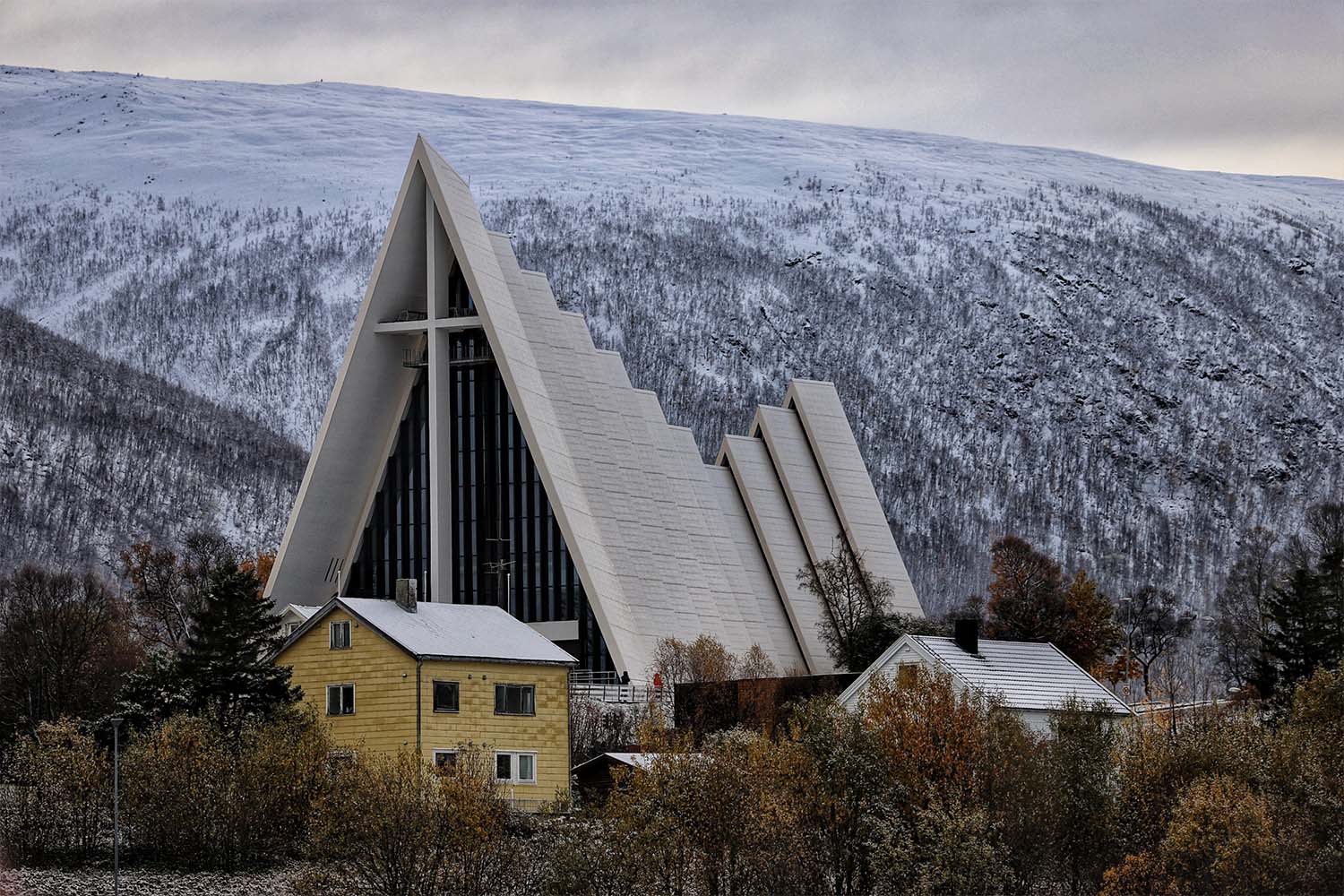
The hotel displays the brand’s signature quirky, laid-back vibe and will be a welcome place to return to between outings. Shut the blackout curtains and you’ll be comfortably ensconced in your personal hibernation chambers, whether the midnight sun is shining in the summer or the wintertime cold is too much to bear for long.
Be sure to visit the Tromsø Villmarksenter, where some 200 Alaskan huskies are trained for sledding and racing. Depending on when you visit, you may be able to go on a ride yourself or take a few of the huskies for a hike. Or, you can do like I did and frolic around the farm petting each and every single one of the dogs, no wagging tail left behind. It’s a great opportunity to reconsider your life and everything you’ve done wrong to have not ended up living and working here in husky heaven. And yes, before you ask: retired dogs are available for adoption.
There are plenty of other diversions around town. Maybe ride the cable car, Fjellheisen Tromsø, for a scenic view of the city, take an aurora dinner cruise aboard the Brim Explorer, or spend a day on the water on the Hermes II, a century-old vessel where you can try your hand at fishing. Definitely visit Pust, a dockside sauna, for some intensive Scandi hot-cold spa action, sweating it out before taking a polar plunge into the waters.
You have to be hardy to make it this far north, after all. “Living up here creates a mentality: strong-minded, relaxed, don’t stress too much,” Minde says. “The Sami have a saying — ‘if I’m not coming today, I’m coming tomorrow.’” Or you know, chill out, bro. It’s going to be alright.
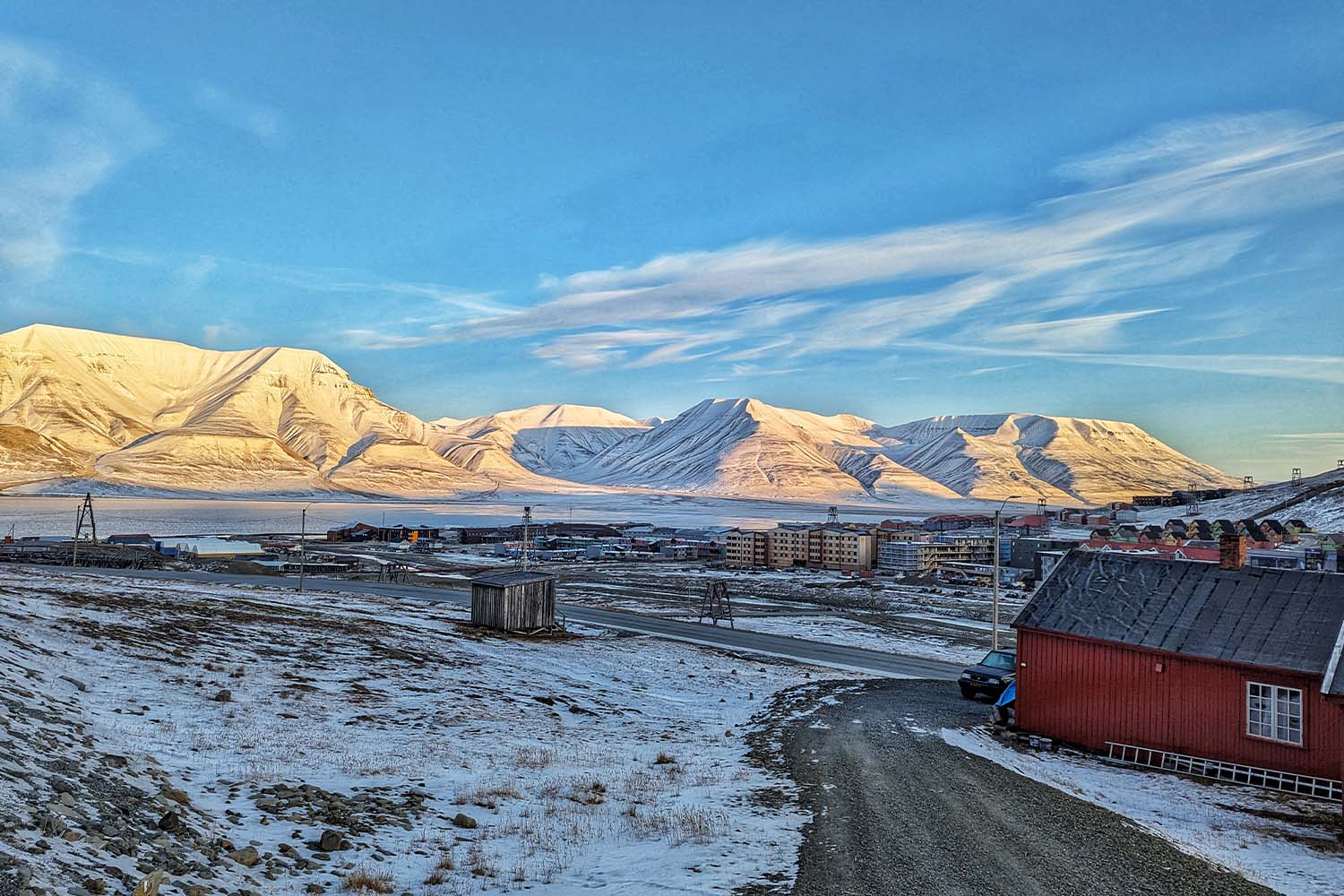
Staying in Svalbard
Svalbard is in our sights, though, so it’s time to continue northward. Most visitors reach the island via cruise, typically on a meandering journey across Norway and its fjords. However, staying in Longyearbyen, on the island of Spitsbergen, allows you to see what life is like for its 2,000 residents — and more to the point, showcases the somewhat strange interplay between humanity and the elements at the civilized world’s northernmost reaches.
Approaching Svalbard feels akin to traveling to a different planet. As the archipelago begins appearing below from your approaching flight, it’s a stark palette of black and white and cobalt, with jagged mountain outcrops and deep fields of perfect, untouched snow, gigantic glacial fields emptying into frozen bays. It’s the forces of nature at work.
Stay at the Funken Lodge, a boutique hotel that was once the reception center and gathering place for the SNSK mining company. In Norwegian, admin or civil service staff are “funksjonærer,” hence, Funken Lodge. The building was purchased by Hurtigruten Svalbard in 1993 and underwent a major renovation in 2017, transforming it into Svalbard’s preeminent place to stay. The funksjonærer would be proud. The super hygge hotel plays into its history, too. Guests are encouraged to remove their shoes and change into a comfortable pair of house slippers while indoors, a throwback to the coal mining days when workers would remove their boots when going inside to avoid tracking black dust around.
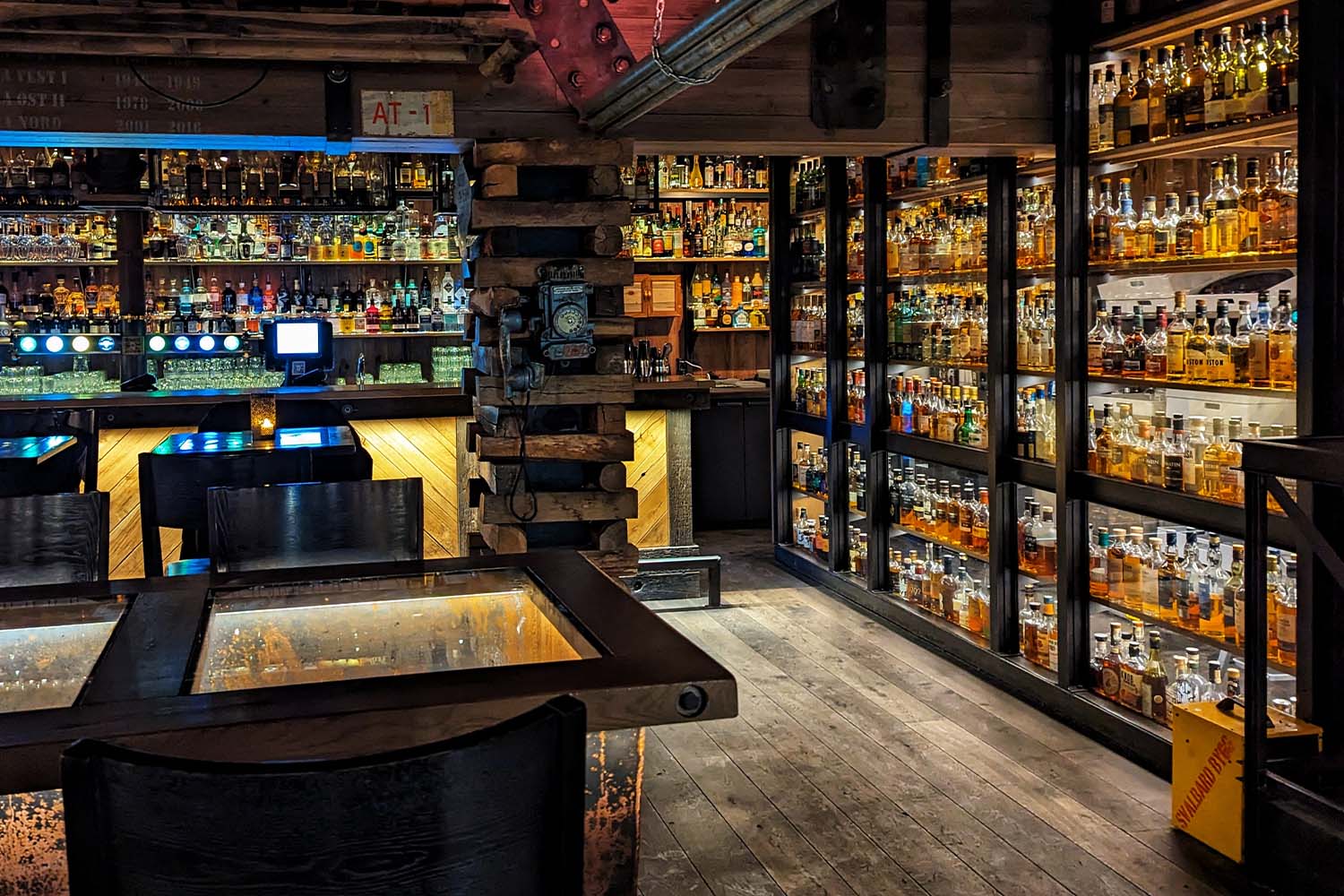
Everything the property offers is about relaxing and fortifying yourself against the conditions, whether it’s a daily session at the sauna, a nightly fireside visit to the bar or both. As for the latter, the Funken Bar has the best cocktails in town. The adjacent Funktionærmessen restaurant offers a scenic vantage point looking down at the town and the fjord beyond and is known for its multi-course dinners. Funken also has a number of sustainable initiatives in place. For instance, if guests opt out of having their towels and sheets changed on a given night, the property makes a donation to support the Hurtigruten Foundation.
But you don’t come to Svalbard to sit idly in your room. The aforementioned half day cruise I went on proved to be an ideal way to see and learn about the surroundings. It was real edge of the earth stuff — vast emptiness, surreal colors, harsh conditions. The odd human remnant of a shack or a boat, or an entire deserted Russian mining town, caused you once again to ponder what in the powder blue of a glacier fuck people are doing up here at all.
It’s one of many excursions that Hurtigruten Svalbard runs across the region. Availability is seasonal, with the most robust activities available during “sunny winter” from about March to May, with options such as snowmobiling, dog sledding and skiing expeditions, as well as “polar summer,” from May to September, with boat trips, hiking, ATV rides and greater chances for polar bear viewing. Northern Lights expeditions are the highlight during the depths of winter when incessant darkness reigns for several months.
Whenever you visit, stop in for a snack at Cafe Huskies where you can pet a few puppies while sipping your coffee. Visit the Karlsberger Pub and sample the wares from an impressive, 500-strong whisky collection and grab a beer at Svalbard Bryggeri, the world’s northernmost brewery. Of course, almost everything in Svalbard counts as the world’s northernmost something. It comes with the territory, and there’s no place else on the planet quite like it.
“Coming here to Svalbard is the best way to know how to protect it,” Donck says. “Being here, seeing the glaciers and how much it’s changing.”
It leaves an impact on any visitor: that it’s imperative to minimize your impact on the place you just visited. “Appreciate the privilege you have of being here,” Donck says.
This article was featured in the InsideHook newsletter. Sign up now.
